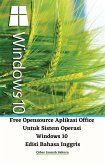Mengenal Berbagai Sistem Operasi Opensource Linux Distro Yang Super Ringan Dan Super Stabil Untuk Penggunaan Harian Dan Infrastruktur Penting Edisi Bahasa Inggris
The history of Linux distro development dates back to 1991 when Linus Torvalds, a Finnish computer science student, released the first version of the Linux kernel. This open-source operating system quickly gained popularity due to its flexibility and the collaborative efforts of developers worldwide.
In the early years, various Linux distributions emerged, including Slackware, Debian, and Red Hat. These distributions aimed to package the Linux kernel along with other software components to provide a complete operating system experience.
Over time, more distributions like Ubuntu, Fedora, and Arch Linux were created, each catering to different user needs. Today, Linux distros continue to evolve, offering a diverse range of features, stability, and customization options.
A stable Linux distribution is a reliable and consistent operating system that is suitable for both daily life and critical environments. It provides a solid foundation for various tasks without frequent crashes or disruptions.
For daily life, a stable Linux distro should offer a user-friendly interface, a wide range of software applications, and seamless compatibility with hardware devices. It should prioritize ease of use, regular updates, and a strong community support system.
The history of Linux distro development dates back to 1991 when Linus Torvalds, a Finnish computer science student, released the first version of the Linux kernel. This open-source operating system quickly gained popularity due to its flexibility and the collaborative efforts of developers worldwide.
In the early years, various Linux distributions emerged, including Slackware, Debian, and Red Hat. These distributions aimed to package the Linux kernel along with other software components to provide a complete operating system experience.
Over time, more distributions like Ubuntu, Fedora, and Arch Linux were created, each catering to different user needs. Today, Linux distros continue to evolve, offering a diverse range of features, stability, and customization options.
A stable Linux distribution is a reliable and consistent operating system that is suitable for both daily life and critical environments. It provides a solid foundation for various tasks without frequent crashes or disruptions.
For daily life, a stable Linux distro should offer a user-friendly interface, a wide range of software applications, and seamless compatibility with hardware devices. It should prioritize ease of use, regular updates, and a strong community support system.









